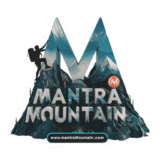## Unlocking Affordable Annapurna: Your Budget-Friendly Nepal Trekking Guide Ever…
📋 Table of Contents
## Unlocking Affordable Annapurna: Your Budget-Friendly Nepal Trekking Guide
Ever dreamt of the majestic Himalayas, but worried the cost of a **Nepal trekking** adventure might be out of reach? Think again! **Annapurna trekking** offers some of the most breathtaking landscapes and enriching cultural experiences, and the good news is, it can be incredibly affordable.
This **Nepal trekking guide** is packed with **budget trekking tips** to help you experience the Annapurna region without breaking the bank.
### Why Annapurna for Budget Trekking?
The Annapurna region, home to iconic treks like Annapurna Base Camp (ABC) and the Annapurna Circuit, is uniquely suited for budget travelers. Its well-established teahouse system means you don’t need expensive camping gear or porters for every item. Plus, the friendly local culture makes independent travel both feasible and rewarding.
### Essential Budget Trekking Tips for Annapurna
Here’s how to make your Annapurna dream a reality on a shoestring budget:
#### 1. Go Independent or with a Local Guide/Porter
* **DIY Trekking:** For confident, experienced trekkers, going solo (or with a trekking partner) is the cheapest option. Trails are generally well-marked, and teahouses provide food and lodging.
* **Local Porter/Guide:** If you prefer support but want to save, hire a local porter or porter-guide directly in Pokhara or Kathmandu. They are significantly cheaper than booking through international agencies and directly support the local economy. They’ll carry your load and navigate, freeing you to enjoy the scenery. Expect to pay around $20-30 USD per day for a porter, or $25-40 USD for a porter-guide.
#### 2. Embrace Teahouse Trekking
This is the cornerstone of **affordable Annapurna trekking**.
* **Accommodation:** Teahouses offer basic, clean rooms (often with two single beds) for incredibly low prices, sometimes as little as $3-7 USD per night. The understanding is that you’ll eat your meals there.
* **Food:** Stick to local Nepali dishes like “Dal Bhat” (lentil soup with rice and vegetables), a nutritious and endlessly refillable meal. It’s the cheapest option (around $5-8 USD) and fuels you perfectly. Avoid imported snacks, soft drinks, and alcoholic beverages as prices skyrocket with altitude.
#### 3. Smart Transportation Choices
* **Local Buses:** While less comfortable and slower, local buses are significantly cheaper than tourist buses or private jeeps. From Kathmandu to Pokhara, or Pokhara to trek starting points like Nayapul, they’re the ultimate budget choice.
* **Share Jeeps:** If you’re a group or don’t mind waiting, shared jeeps can be a good compromise between comfort and cost, often departing once full from major towns.
#### 4. Rent, Don’t Buy, Gear
Unless you’re a seasoned trekker with all your own equipment, renting gear in Kathmandu or Pokhara is a huge money-saver.
* **Items to Rent:** Sleeping bags, down jackets, trekking poles, and even waterproof outer layers are readily available.
* **Cost:** Rental prices are very reasonable, often just a few dollars per item per day. This is one of the top **budget trekking tips** for first-timers!
#### 5. Pack Light and Smart
* **Minimise Luggage:** The less you carry, the less you pay a porter (if you hire one), and the more comfortable you’ll be if you’re carrying your own pack.
* **Essentials Only:** Focus on layers, good quality trekking boots, a first-aid kit, water purification, and personal toiletries. You don’t need a fancy wardrobe up in the mountains.
#### 6. Water Purification – Your Best Friend
Buying bottled water every day adds up quickly and creates plastic waste.
* **Options:** Carry a reusable water bottle and use purification tablets (iodine or chlorine dioxide), a Lifestraw, or a SteriPEN.
* **Cost Savings:** This can save you $2-5 USD per day, adding up significantly over a multi-day trek.
#### 7. Permits & Fees: The Non-Negotiables
While you can save on many things, you’ll need to factor in the mandatory permits:
* **Annapurna Conservation Area Permit (ACAP):** Approx. $30 USD.
* **TIMS (Trekkers’ Information Management System) Card:** Approx. $17 USD for independent trekkers.
You can obtain these in Kathmandu (Nepal Tourism Board) or Pokhara. Have passport photos ready!
#### 8. Travel in Shoulder Seasons
* **Peak Seasons (Fall & Spring):** Offer the best weather but can be more crowded and slightly pricier for flights/accommodation.
* **Shoulder Seasons (March-April & Late Sept-Nov):** Often have good weather, fewer crowds, and potentially lower prices for some services. Winter (Dec-Feb) and Monsoon (June-Aug) are cheaper still but come with weather challenges.
### Your Affordable Annapurna Adventure Awaits!
**Annapurna trekking** doesn’t have to be an exclusive luxury. By making smart choices, embracing the local way of life, and utilizing these **budget trekking tips**, you can experience the awe-inspiring beauty of the Himalayas without emptying your wallet.
So, start planning your adventure, pack your bags (lightly!), and get ready for an unforgettable journey through one of the world’s most magnificent mountain ranges. Your dream **Nepal trekking guide** to affordability begins now!
—
**Ready to explore the Annapurna region on a budget? Share your own money-saving tips in the comments below!**
